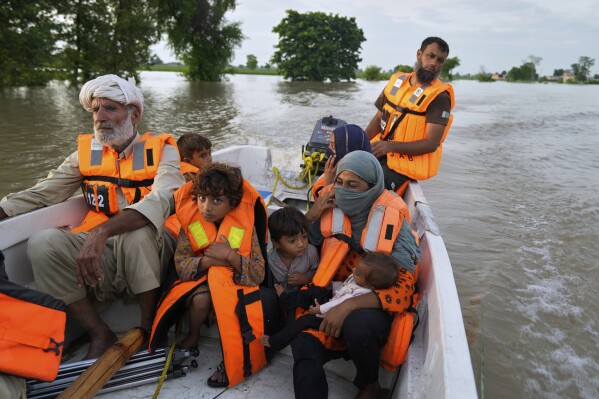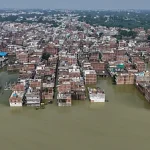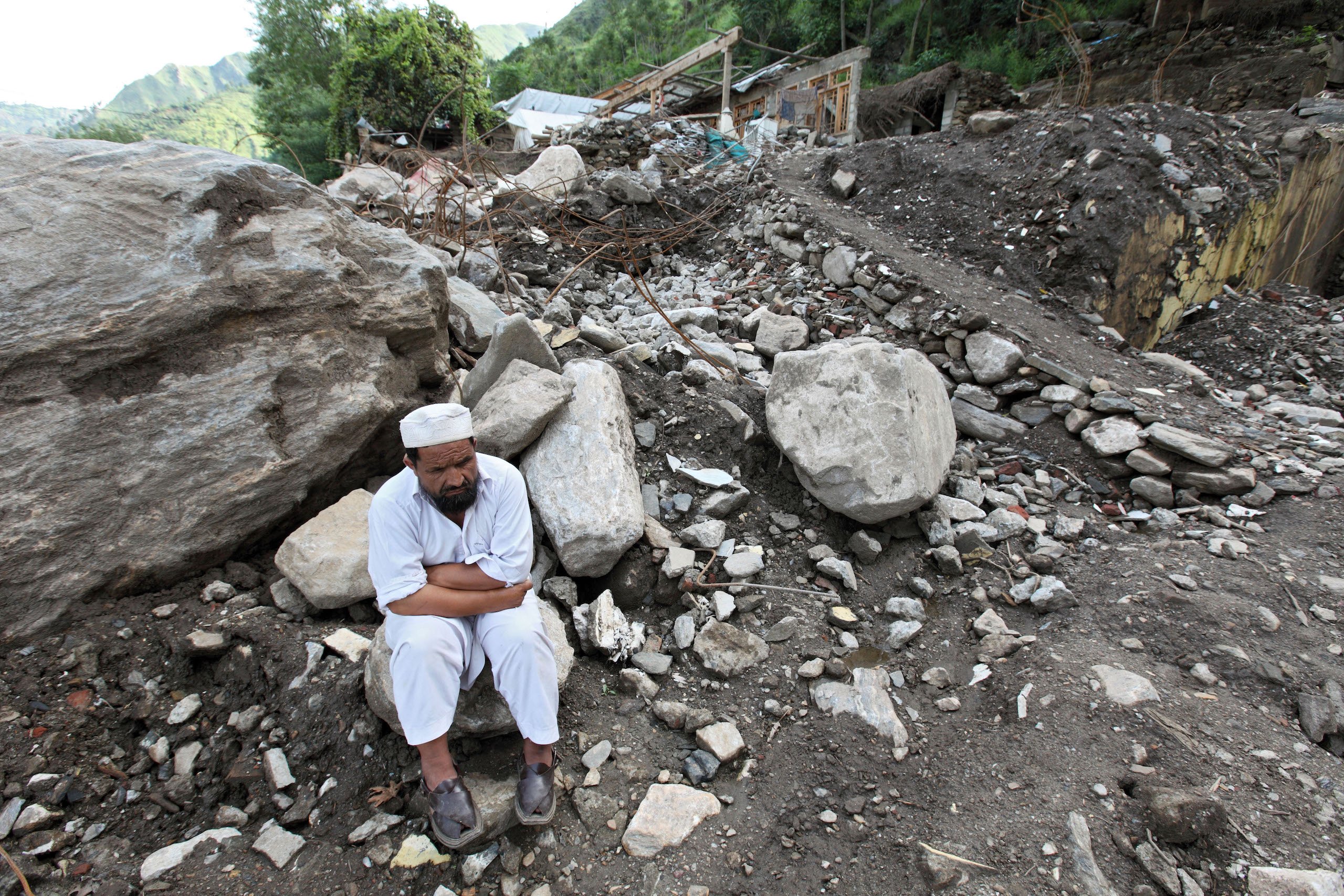Pakistan has once again found itself at the mercy of swelling rivers and rising floodwaters after India released excess water from its overflowing dams and rivers. In a nation already prone to climate-induced disasters, this development has forced authorities to launch massive evacuation operations across Punjab and Sindh. Reports suggest that nearly 50,000 people have been moved to safer grounds, with thousands more on standby as rescue teams brace for the situation to worsen.
- The Crisis Unfolds: Water Released from India’s Rivers
- Evacuations and Rescue Operations
- The History of Water Disputes Between India and Pakistan
- Human Toll: Stories from the Ground
- Agricultural Losses and Economic Impact
- Climate Change: A Bigger Threat
- India-Pakistan Relations: A Fragile Equation
- Government’s Response and Future Preparedness
- Global Humanitarian Appeal
- FAQs
- Conclusion
This story is not just about rising waters but also about the complex history of water-sharing between India and Pakistan, the recurring threat of monsoon floods, and the human cost of a changing climate in South Asia. To understand the gravity of the moment, one must look beyond the headlines and into the lives of the people now stranded, displaced, or clinging to fragile hope as water levels keep climbing.
The Crisis Unfolds: Water Released from India’s Rivers
The crisis began when India, overwhelmed by torrential monsoon rains, released water from its overflowing rivers and dams. Officials in Pakistan’s National Disaster Management Authority (NDMA) confirmed that water entered through the Sutlej, Ravi, and Chenab rivers, swelling their banks and pushing already vulnerable regions into chaos.
According to initial assessments, over 100 villages in Punjab’s Kasur and Okara districts have been inundated. The flooding swept away standing crops, submerged homes, and forced families to abandon their belongings. In southern Punjab and northern Sindh, alerts have been issued as authorities prepare for additional inflows.
“The floodwater entered our fields within hours. We lost everything we had sown this season,” said Muhammad Aslam, a farmer from Kasur. His words reflect the plight of thousands who depend on agriculture for survival, now watching helplessly as their livelihoods drown.
Evacuations and Rescue Operations
Pakistan’s government, in coordination with local administrations and the military, has carried out massive rescue operations. Boats, helicopters, and emergency shelters have been deployed to relocate families from flood-prone areas. So far, nearly 50,000 people have been evacuated, though the actual number of people at risk is much higher.
Rescue teams also face enormous challenges. Roads have been washed away, power outages are widespread, and in some areas, communication lines are down. Relief camps have been set up in schools, mosques, and government buildings, providing temporary shelter to displaced families. Yet, reports from aid groups suggest shortages of clean drinking water, food, and medicine remain a pressing concern.
The History of Water Disputes Between India and Pakistan
The floods once again bring into focus the contentious water-sharing relationship between India and Pakistan. Since the Indus Waters Treaty of 1960, brokered by the World Bank, the two nations have had an agreement on how to share six major rivers.
However, Pakistan has often accused India of violating the spirit of the treaty by releasing water without prior notice during times of heavy rainfall. Indian officials, on the other hand, argue that sudden releases are sometimes unavoidable when dams and reservoirs approach danger levels.
Experts believe that improved communication and cooperation could minimize the damage caused by such events. “The lack of timely coordination exacerbates the humanitarian crisis. Early warnings and joint mechanisms could save lives and livelihoods,” said Dr. Hassan Abbas, a water policy analyst in Lahore.
Human Toll: Stories from the Ground
Behind every statistic lies a human story. In Kasur, families have been seen wading chest-deep in water to reach higher ground. In some cases, residents tied ropes between trees to guide children and elderly people across submerged roads.
In Sindh, villagers are using makeshift rafts built from wooden doors and plastic barrels to carry belongings. A mother of four, Fatima Bibi, recounted her struggle: “We had to leave our home in the middle of the night. The water was rising fast. My children were crying, and we had nowhere to go. Now we are living in a camp with dozens of families, but at least we are safe.”
These personal accounts highlight the desperation and resilience of ordinary Pakistanis who face flooding year after year with limited resources.
Agricultural Losses and Economic Impact
The floods have not only displaced thousands but also dealt a severe blow to Pakistan’s already fragile economy. Punjab, often called the country’s “breadbasket,” is the worst affected. Officials estimate that thousands of acres of cotton, sugarcane, and rice fields have been destroyed.
Agricultural experts warn that losses could run into billions of rupees, worsening food inflation and hitting rural farmers hard. Pakistan’s economy, already struggling with inflation rates hovering above 20% and external debt crises, cannot afford another shock.
“Floods have become a recurring economic disaster for Pakistan. Each year, we rebuild homes, repair roads, and revive agriculture, only for the cycle to repeat,” said economist Dr. Ayesha Khan.
Climate Change: A Bigger Threat
The current disaster cannot be seen in isolation. Pakistan ranks among the top ten most vulnerable countries to climate change, despite contributing less than 1% to global carbon emissions.
In 2022, devastating floods submerged one-third of the country, killing over 1,700 people and displacing more than 33 million. The memory of that catastrophe is still fresh in the minds of many, and the present crisis has rekindled fears of another large-scale humanitarian disaster.
Climate scientists argue that heavier monsoon rains, unpredictable weather patterns, and glacier melt in the Himalayas are intensifying floods across South Asia. Without substantial investment in climate resilience and cross-border water management, such tragedies are bound to escalate.
India-Pakistan Relations: A Fragile Equation
The floods also reopen political debates in Pakistan regarding India’s water management practices. Opposition leaders have accused the government of failing to demand accountability from New Delhi. Others argue that natural disasters should not be politicized but instead tackled through joint cooperation.
Analysts say that while both nations remain locked in political hostility, shared vulnerabilities like floods and climate change could serve as a platform for dialogue. But given the deep mistrust, such cooperation remains elusive.
Government’s Response and Future Preparedness
Prime Minister Shehbaz Sharif has ordered immediate relief measures, including financial assistance for displaced families, medical supplies, and food rations. The army and paramilitary forces have been mobilized to provide logistical support in flood-hit areas.
Yet, critics argue that Pakistan’s disaster preparedness remains inadequate. The lack of robust early warning systems, insufficient embankments, and poor urban planning leave millions exposed to annual flooding risks.
Experts emphasize that building resilient infrastructure, modernizing irrigation systems, and enforcing strict zoning laws are crucial for long-term solutions. International support, both financial and technical, is also necessary given Pakistan’s limited resources.
Global Humanitarian Appeal
International organizations, including the United Nations and Red Crescent, have expressed concern over the unfolding crisis. Humanitarian agencies are monitoring the situation closely, preparing to launch relief operations if the floods worsen.
Donors are also expected to step in, though Pakistan’s appeal for aid comes at a time when global attention is divided by multiple crises, from wars to climate disasters.
FAQs
Why did Pakistan evacuate so many people?
Pakistan evacuated nearly 50,000 people after India released excess water from overflowing rivers, which threatened to flood villages and towns in Punjab and Sindh.
Which rivers were affected by the water release?
The Sutlej, Ravi, and Chenab rivers experienced rising levels after water was released from Indian dams and reservoirs.
What is the Indus Waters Treaty?
The Indus Waters Treaty, signed in 1960, governs the distribution of water from six major rivers between India and Pakistan. It is considered one of the most successful water-sharing agreements globally, but tensions remain.
How has climate change worsened Pakistan’s flooding?
Climate change has intensified monsoon rains, accelerated glacier melt, and caused unpredictable weather, making floods more frequent and severe in Pakistan.
What steps can Pakistan take to reduce flood risks?
Experts suggest building resilient infrastructure, improving early warning systems, enforcing urban planning regulations, and enhancing cross-border cooperation on water management.
Conclusion
The forced evacuation of nearly 50,000 people after India released excess water is more than just a seasonal flood—it is a stark reminder of Pakistan’s vulnerability to climate shocks, its fragile water relationship with India, and the dire need for better preparedness.
Every displaced family, every ruined crop, and every washed-away home is a call to action. Unless Pakistan and its neighbors adopt stronger water management strategies and climate resilience measures, such tragedies will continue to devastate millions of lives.
The people of Pakistan deserve more than temporary rescue operations; they deserve long-term solutions that safeguard their homes, their fields, and their future.











